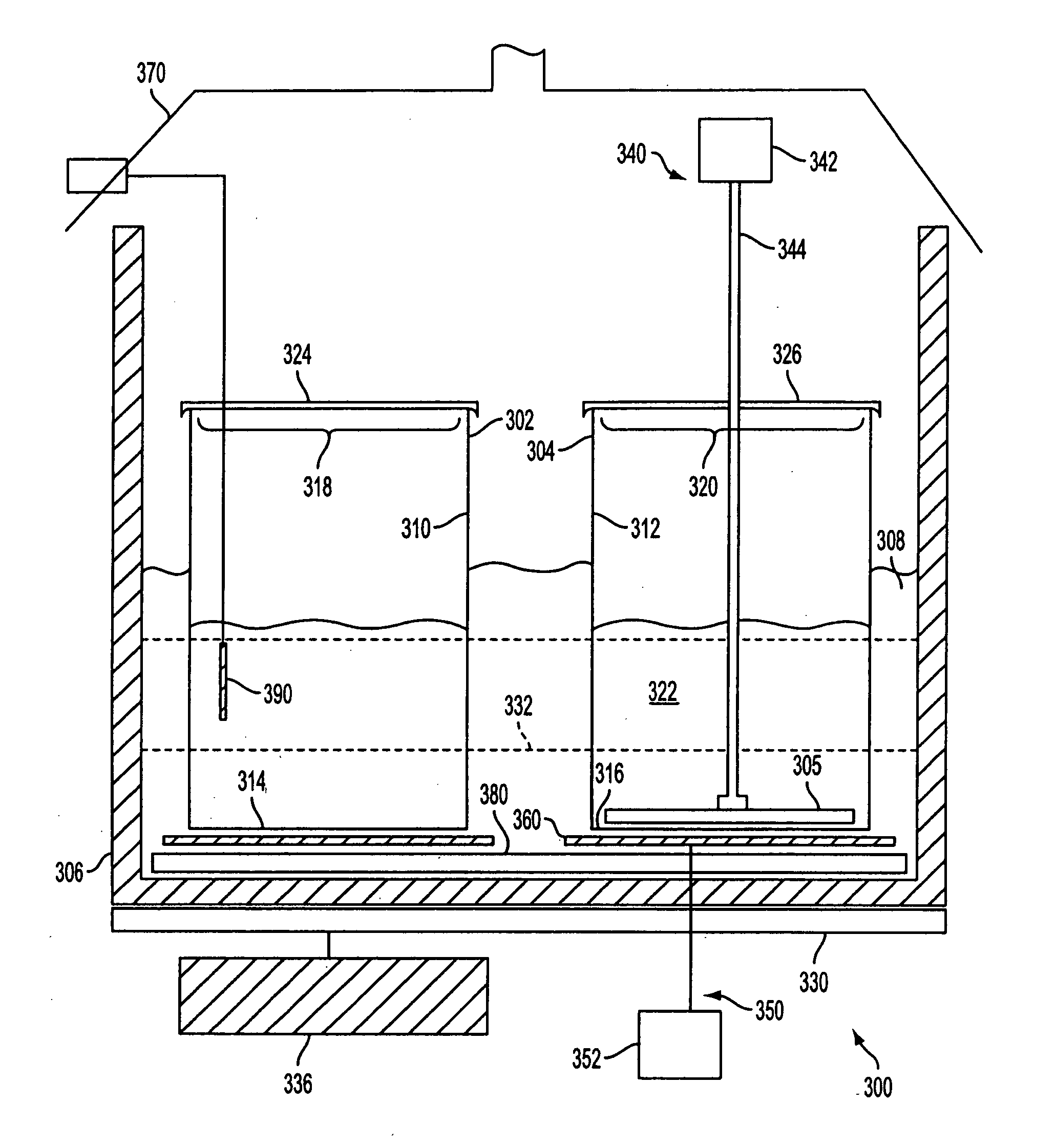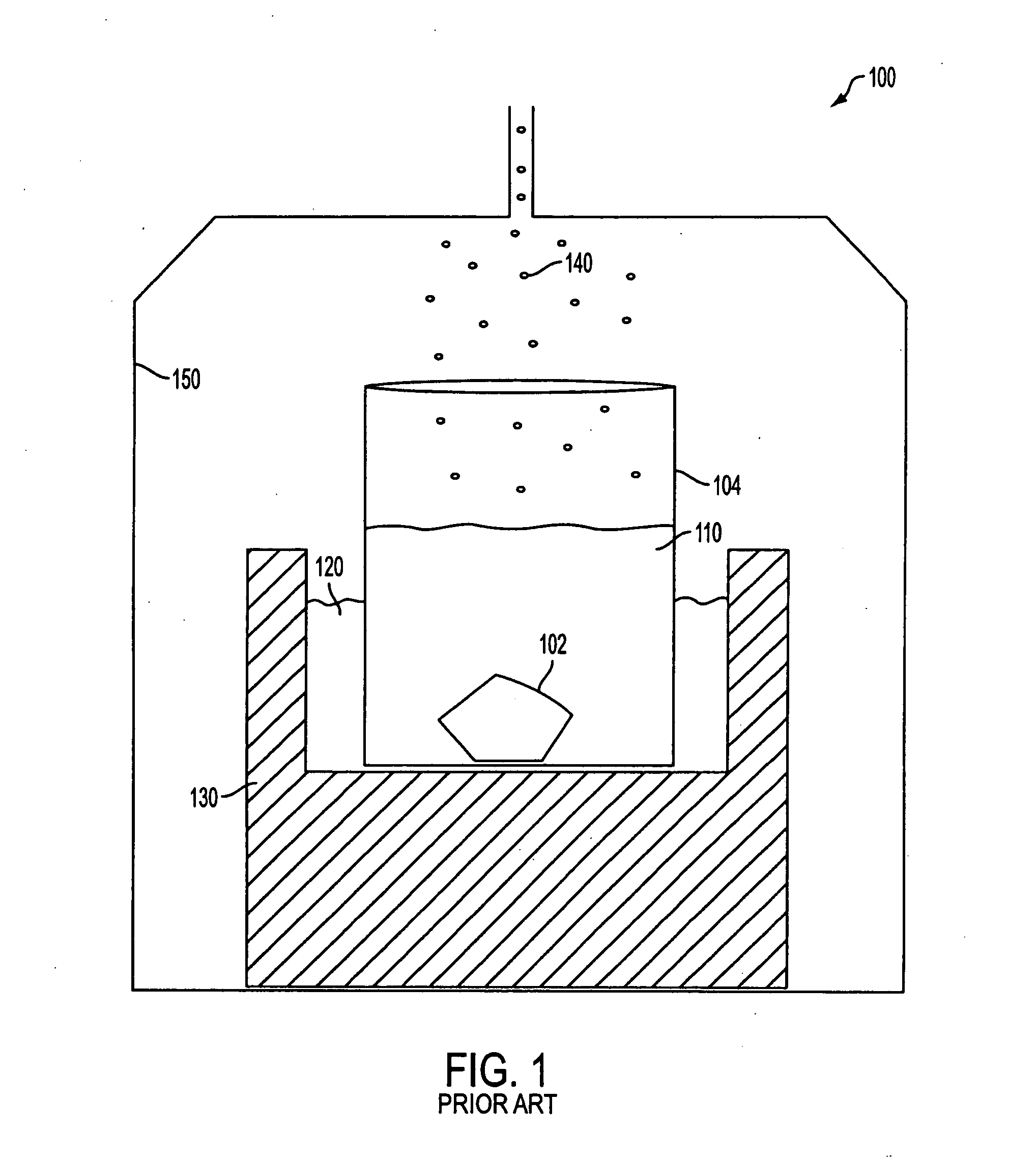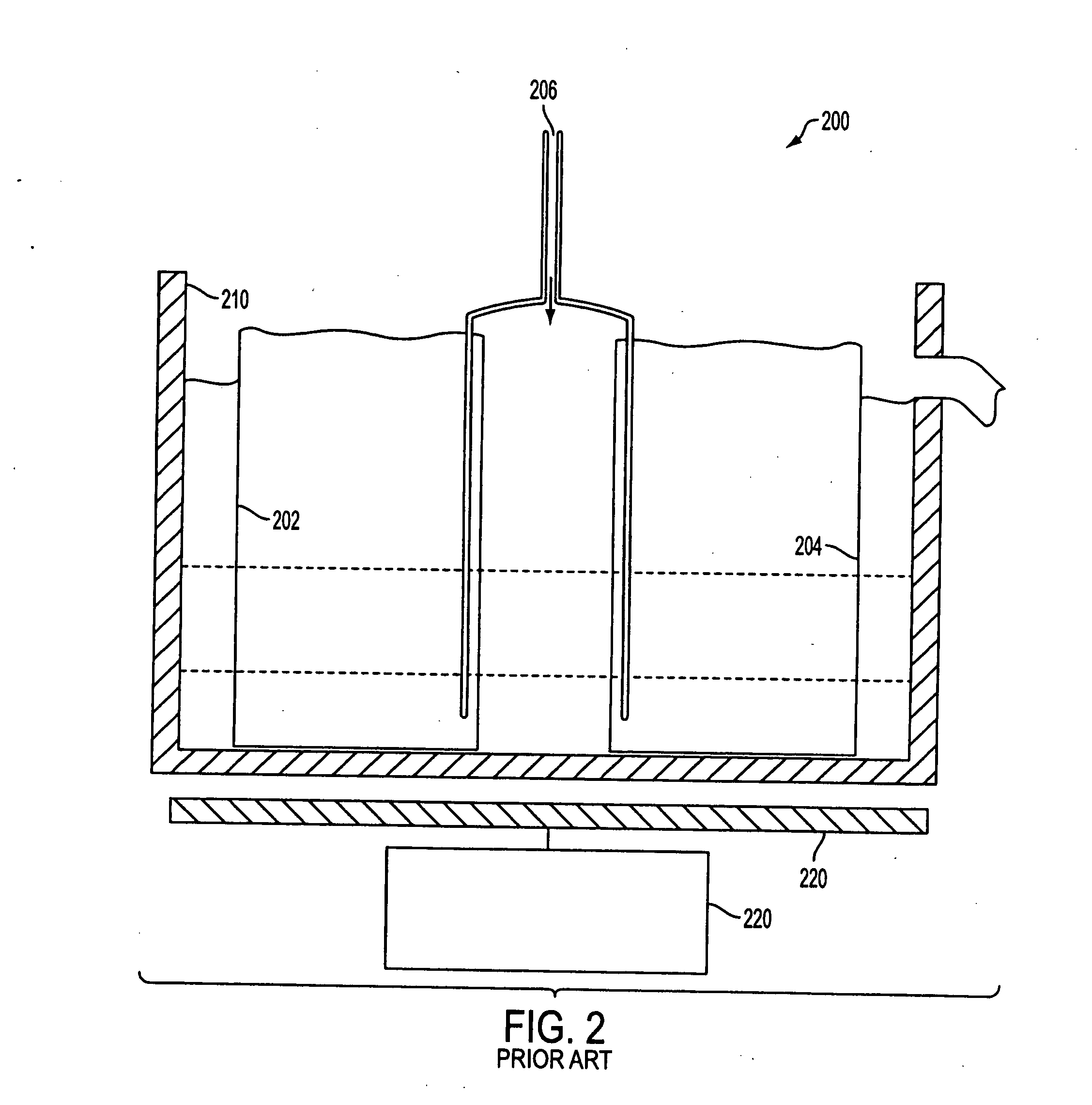Ultrasonic assisted etch using corrosive liquids
a technology of corrosive liquids and ultrasonic etching, which is applied in the direction of cleaning process and apparatus, cleaning using liquids, chemistry apparatus and processes, etc., can solve the problems of non-uniform etching across the wafer, contamination of equipment used in semiconductor processing process, and unusability
- Summary
- Abstract
- Description
- Claims
- Application Information
AI Technical Summary
Benefits of technology
Problems solved by technology
Method used
Image
Examples
example 1
[0108] For the acidic etching of a quartz workpiece using a 1:1:1 ratio of hydrofluoric acid (49% wt) / nitric acid (70% wt) / water mixture, which corresponds to an acid concentration of 16% wt for HF and 23% wt for HNO3 at 20±5° C., with an ultrasonic energy of 25 to 40 kHz and an ultrasonic power of 30-50 watts / gallon, an etch of 0.5 μm per minute was obtained.
example 2
[0109] A quartz insulator ring from a semiconductor tool is ultrasonically etched with 1:1:1 or 1:2:2 volume ratios of hydrofluoric acid (49% wt) / nitric acid (70% wt) / water at 20±5° C. with an ultrasonic energy of 25 to 40 kHz and an ultrasonic power of 30-50 watts / gallon, to etch off 5 to 100 μm of material. The 1:1:1 volume ratio is 16% wtHF and 23% wt HNO3 and for the 1:2:2 ratio is 10% wt HF and 30% wt HNO3.
example 3
[0110] Polysilicon was isotropically or anisotropically etched using acidic and basic ultrasonic assisted etching processes to remove 5 to 200 μm of material. In one example, a 1:7:2 ratio of hydrofluoric acid (49% wt) / nitric acid (70% wt) / water, which corresponds to a 5% wt for hydrofluoric acid and 7% wt for nitric acid, at 20±5° C. with an ultrasonic energy of 25 to 40 kHz and an ultrasonic power of 30-50 watts / gallon was used to remove the material. In another example, a 30% potassium hydroxide solution at 2015° C. with an ultrasonic energy of 25 to 40 kHz and an ultrasonic power of 30-50 watts / gallon was used to remove the material.
PUM
| Property | Measurement | Unit |
|---|---|---|
| temperature | aaaaa | aaaaa |
| frequency | aaaaa | aaaaa |
| frequency | aaaaa | aaaaa |
Abstract
Description
Claims
Application Information
 Login to View More
Login to View More - R&D
- Intellectual Property
- Life Sciences
- Materials
- Tech Scout
- Unparalleled Data Quality
- Higher Quality Content
- 60% Fewer Hallucinations
Browse by: Latest US Patents, China's latest patents, Technical Efficacy Thesaurus, Application Domain, Technology Topic, Popular Technical Reports.
© 2025 PatSnap. All rights reserved.Legal|Privacy policy|Modern Slavery Act Transparency Statement|Sitemap|About US| Contact US: help@patsnap.com



